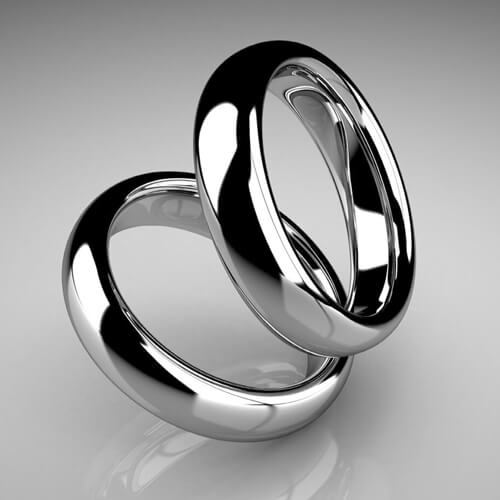This website uses cookies so that we can provide you with the best user experience possible. Cookie information is stored in your browser and performs functions such as recognising you when you return to our website and helping our team to understand which sections of the website you find most interesting and useful.
- Home
- Materials
- CNC Machining Metal
- Stainless Steel
- Stainless Steel 304L
Stainless Steel 304L

Material Type
Metal
Material Name
Stainless Steel 304L
Alternative Names
1.4307 | X2CrNi18-9 | S30403
Process Compatibility
CNC Milling, CNC Turning
introduction
Stainless Steel 304L in CNC Machining

Stainless Steel 304L is a widely used stainless steel alloy known for its corrosion resistance, formability, and weldability.
Choosing sharp carbide tools, preferably coated for extended tool life, is important when machining this material using CNC processes. Adjust cutting speeds and feeds accordingly, considering the workpiece complexity and CNC machine capabilities. Using a water-based coolant helps dissipate heat, preventing work hardening. Secure workpieces well to minimize vibrations and ensure effective chip control to prevent tool wear. Post-machining processes like deburring may be necessary, and achieving a desired surface finish may require specific tooling and parameters. Regularly monitor tool wear and maintain a clean machining environment to avoid contamination.
Stainless Steel 304 and Stainless Steel 304L are closely related alloys with similar corrosion resistance and mechanical properties. The key difference lies in their carbon content, where 304 has about 0.08% carbon and 304L (the "L" denotes low carbon) has a maximum of 0.03%. This small difference makes Stainless Steel 304L more resistant to sensitization and intergranular corrosion after welding. That’s why 304L is preferred in applications involving extensive welding, such as fabricating pressure vessels, where corrosion resistance post-welding is important. Plus, 304L may be more suitable in regions where it is readily available and cost-effective.
Properties
Properties Table of Stainless Steel 304L
| MECHANICAL PROPERTIES | |
|---|---|
| Ultimate Tensile Strength | 485-600 MPa |
| Yield Strength | 170-310 MPa |
| Young's Modulus(Elasticity) | 191 GPa |
| Elongation at Break | 35 %(min) |
| Physical Properties | |
| Corrosion Resistance | Good |
| Magnetism | No |
| UV Resistance | Excellent |
| Weldability | Excellent |
| Thermal Properties | |
| Maximum Service Temperature | 750-925 °C |
| Thermal Expansion Coefficient | 16.5 x 10^-6/°C |
| Thermal Conductivity | 16.2 W/(m·°C) |
| Electrical Properties | |
| Electrical Resistivity | 70 μΩ*cm |
TECHNOLOGY OVERVIEW
Basic Knowledge of Stainless Steel 304L
What is Stainless Steel 304L?
Stainless Steel 304L is an austenitic stainless steel known for its corrosion resistance and versatility. It belongs to the 300 series and has a lower carbon content than standard 304 stainless steel. The reduced carbon content helps prevent carbide precipitation during welding, enhancing corrosion resistance.
This steel is widely used in the food and beverage industry, chemical processing, and pharmaceuticals. Its ease of fabrication and formability make it a popular choice for manufacturing pipes, tanks, and heat exchangers.
Advantages of Stainless Steel 304L
Excellent corrosion resistance
Low carbon content reduces the risk of intergranular corrosion during welding
Easy weldability
Retains strength and corrosion resistance at high temperatures
Smooth surface for easy cleaning, resistant to bacterial and fungal growth
High durability, long lifespan
Visually appealing, shiny finish for aesthetic appeal
Recyclable and environmentally friendly
Applications of Stainless Steel 304L
Kitchen Sinks
Pipe and Tubing for Water Treatment
Surgical Instruments
Aerospace Exhaust Systems
Pharmaceutical Equipment
Automotive Trim
Food Processing Equipment
Textile Machinery Components
FAQ
Machining Stainless Steel 304L Buying FAQ
Other Materials

Stainless Steel 316L
Stainless Steel 316L is a popular austenitic stainless steel in CNC machining due to its excellent corrosion resistance, high strength, and versatility.

Stainless Steel 304
Stainless Steel 304 is a commonly used material in CNC machining. It is known for its corrosion resistance and mechanical properties.

Stainless Steel 17-4 PH
Stainless steel 17-4 PH is a strong and durable alloy that can be hardened through aging at different temperatures.
Get An Accurate Quote For Your Next Projects
No matter your project is complicated or simple, no matter is metal or plastic, you will get an accurate quotation within 6 hours.
Get A Quote Today